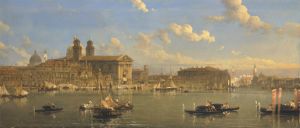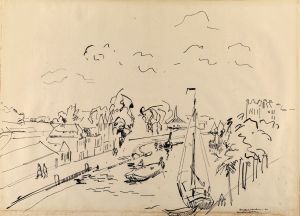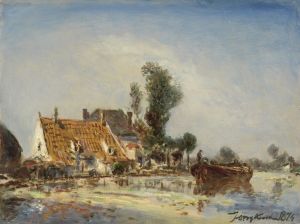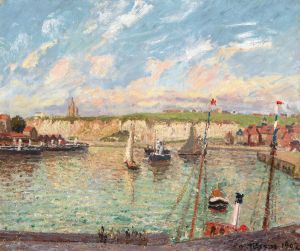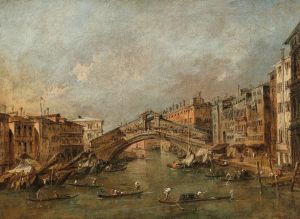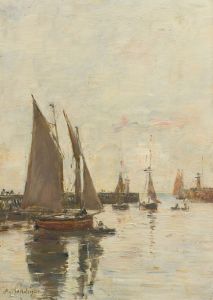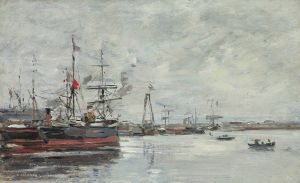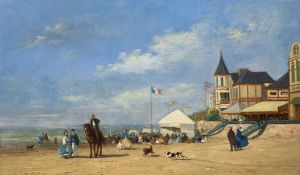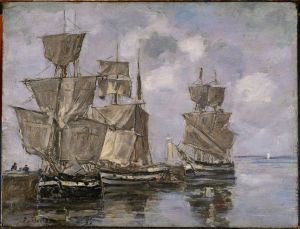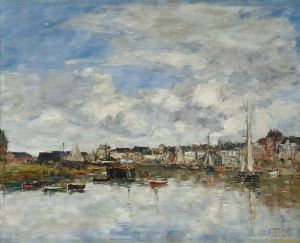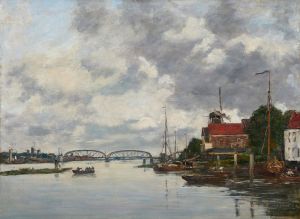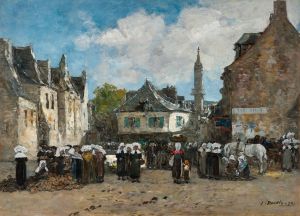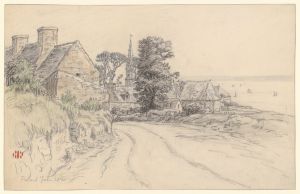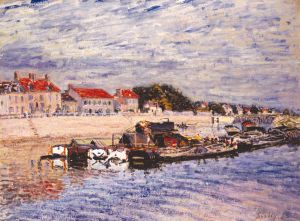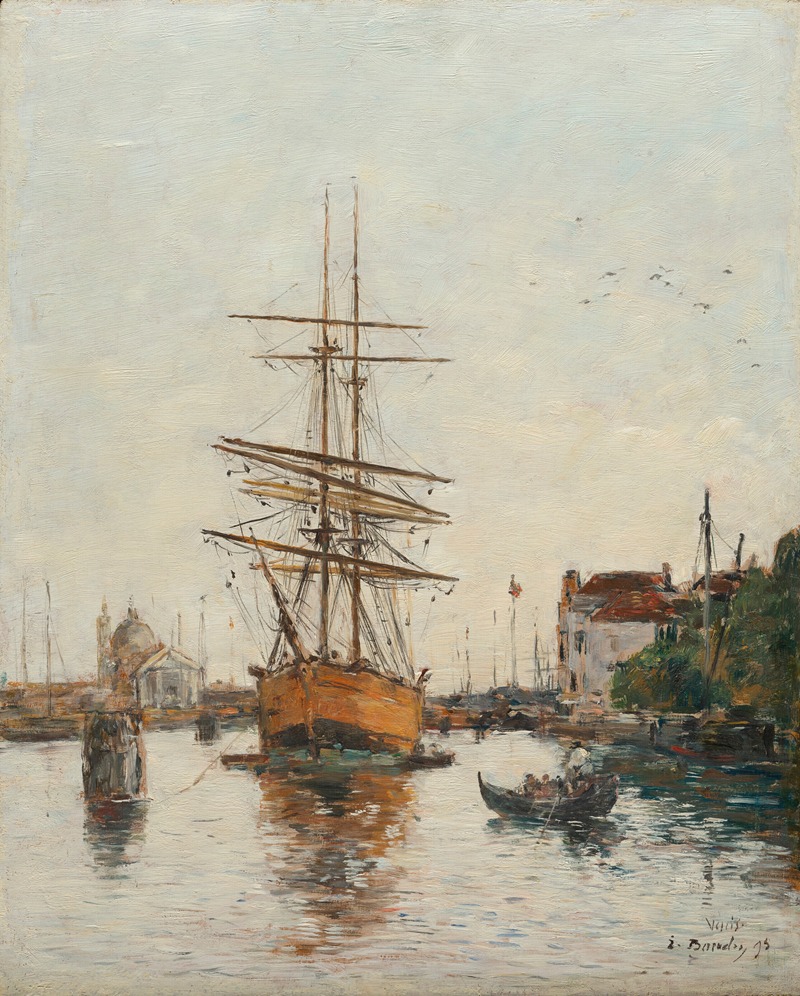
Venise, Le Quai de la Giudecca
A hand-painted replica of Eugène Boudin’s masterpiece Venise, Le Quai de la Giudecca, meticulously crafted by professional artists to capture the true essence of the original. Each piece is created with museum-quality canvas and rare mineral pigments, carefully painted by experienced artists with delicate brushstrokes and rich, layered colors to perfectly recreate the texture of the original artwork. Unlike machine-printed reproductions, this hand-painted version brings the painting to life, infused with the artist’s emotions and skill in every stroke. Whether for personal collection or home decoration, it instantly elevates the artistic atmosphere of any space.
"Venise, Le Quai de la Giudecca" is a painting by the French artist Eugène Boudin, who is widely recognized for his contributions to the development of landscape painting and his influence on the Impressionist movement. Boudin was born on July 12, 1824, in Honfleur, France, and he is particularly known for his seascapes and beach scenes, capturing the transient effects of light and atmosphere.
The painting "Venise, Le Quai de la Giudecca" depicts a view of the Giudecca Canal in Venice, Italy. The Giudecca Canal is a significant waterway in Venice, separating the main city from the island of Giudecca. This location has been a popular subject for artists due to its picturesque scenery and the unique interplay of light on the water.
Boudin's work is characterized by his ability to capture the fleeting moments of light and weather, and "Venise, Le Quai de la Giudecca" is no exception. The painting showcases his skill in rendering the reflections on the water and the atmospheric conditions of Venice. The composition likely includes boats, buildings, and the bustling activity along the quay, typical of Boudin's interest in maritime life and coastal scenes.
Eugène Boudin was a precursor to the Impressionist movement, and his work had a significant influence on younger artists, including Claude Monet. Boudin's approach to painting en plein air (outdoors) was innovative at the time and allowed him to capture the natural light and colors of the landscape with great immediacy and freshness. This technique is evident in "Venise, Le Quai de la Giudecca," where the artist's brushstrokes convey the vibrancy and dynamism of the scene.
Boudin's fascination with Venice is part of a broader trend among 19th-century artists who were drawn to the city's unique charm and luminous atmosphere. Venice's canals, architecture, and light have inspired countless works of art, and Boudin's painting contributes to this rich tradition. His depiction of the Giudecca Canal offers a glimpse into the daily life and beauty of Venice during the period.
"Venise, Le Quai de la Giudecca" reflects Boudin's mastery of light and his ability to evoke a sense of place. The painting is an excellent example of his mature style, where he combines a keen observation of nature with a loose, expressive technique. Boudin's work remains highly regarded for its contribution to the development of modern landscape painting and its influence on the Impressionist movement.
Eugène Boudin continued to paint until his death on August 8, 1898. His legacy endures through his numerous works, which are held in major museums and collections around the world. "Venise, Le Quai de la Giudecca" stands as a testament to his skill and his enduring fascination with the interplay of light, water, and atmosphere.





